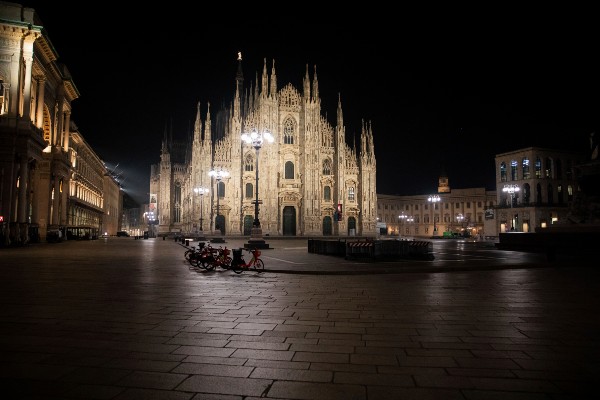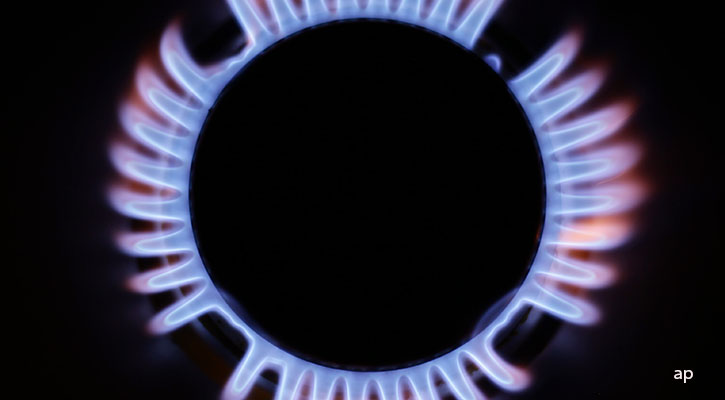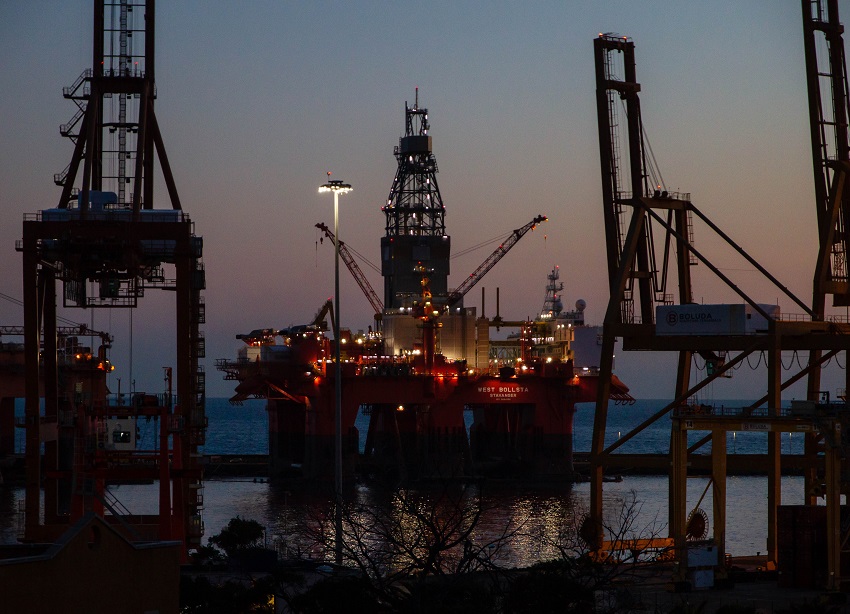
Candle-lit restaurants are all the rage in Milan. It's intimate, it's romantic, and it's increasingly a necessity as spiralling energy prices threaten to bring European businesses to their knees.
The whole city feels more dim than usual, with many shopkeepers keeping their signs and display lighting switched off after hours. Others work reduced hours because “it doesn't even pay to stay open with these energy costs”, as Andreina Mancini, owner of the historic Pasticceria Sieni in Florence, explained to local newspaper La Nazione after receiving a €10,242 electricity bill.
The first major crisis of the globalized gas market and the short-term pricing system based on gas-to-gas competition, or the real-time balancing of supply and demand, is already reaping its first victims as price volatility renders many forms of energy-intensive production unprofitable.
How we Got Here
Today's extreme gas price volatility did not start when Russia launched its attempt to subjugate neighboring Ukraine, or when Western nations' sanctions upended Russia's economic links to the outside world. Rather, the stage was set years ago, and prices began to spike in September of 2021.
Historically, European methane imports were based on long-term contracts containing prices indexed to those of petroleum products and take-or-pay clauses. That means that in return for a more stable price, the purchaser is obliged to pay the contractual price of a minimum quantity of gas stipulated in the contract, even in the event that he does not withdraw the gas.
This model began to weaken in the post-2008 years, when the decrease in industrial and thermoelectric consumption due to the global financial crisis and the rise of renewable sources led to surplus supply, increased competition and a gradual increase in the volumes of gas offered in the short term.
With the full support of the European Union and regulators, therefore, spot transactions have gradually become the main benchmark of the wholesale and consumer markets, especially those formed on the TTF.
TTF? What's That?
The TTF, or Title Transfer Facility, was created in 2003 to offer a virtual trading point for natural gas in the Netherlands.
Although it is not the only market on which gas purchase and sale contracts are exchanged in Europe, it has established itself over the past 20 years as a reference hub for prices throughout Europe. By 2019, according to data from the International Gas Union, 80% of the gas consumed in Europe was based on spot prices and only 20% on long-term contracts. This short-term-oriented pricing system functioned well in an era of oversupply that peaked in 2020, when demand uncertainty sent prices to their historical lows.
On the TTF, gas producers, storage companies, distributors and network operators, as well as financial companies mainly trade futures contracts. This type of contract, however, is not only the prerogative of traders: companies and governments also use them in order to anticipate their purchases or close supply contracts in advance.
This makes the entire system more exposed to market speculation. Recent months show us that when faced with 'abnormal' conditions, free trading is subject to potentially uncontrolled volatility.
The 'Perfect Storm' Behind Price Explosion
As shown in the graph above, the gas market run actually started in September 2021.
"Last year we witnessed what I called the perfect storm in the gas market," explains Massimo Nicolazzi, professor of Economics of Energy Sources at the University of Turin.
"A hot summer with lots of air conditioning and storage facilities for the winter filling up slower than usual; extraordinary pipeline maintenance after Covid-19 that created supply problems, as well as some infrastructure failures and fires. Not forgetting the under-performance of other energy sources: Brazil with practically no hydroelectricity, the wind deserting England. And then Chinese demand, which in the second quarter of 2021 reached an all-time peak in terms of import volume." In short, all the conditions for a market explosion were in place well before the outbreak of war in Ukraine.
"The war has grafted itself onto an already very short market," Professor Nicolazzi continues, "and if in such a situation I cut 10% of the global supply and at the same time have a marginal price system, well, there you have a perfect storm."
In December, gas hit its 2021 peak of €180-- a tenfold leap from the €18 at the beginning of that year. In relative terms, the increase since the beginning of the war is far smaller at less than 300%.
The Role of Speculation
During the summer of 2022, demand for European gas remained at normal levels, even decreasing slightly compared to the previous year. On the supply side, flows from Moscow have been broadly constant to date, except for a few moments of crisis because of stoppages in the Nord Stream 1 pipeline due to technical problems alleged by Russia.
"In this context, the value of the TTF above €300/MWh appears absolutely devoid of reference to the real gas market and therefore essentially the result of gigantic speculation," says Salvatore Carollo, an analyst and trader specialized in the Oil & Energy sector and former ENI executive.
Carollo doesn’t mince words: "perhaps the time has come to clearly admit that the real anomalous, sick element of the gas price formation system is precisely the TTF generated on the Amsterdam Gas Exchange. If we do not get rid of this parameter, we will end up suffering a crisis artificially generated by a handful of international speculators playing in a kind of village fair, usurping the name European Gas Exchange."
"Let’s clarify a few important elements," continues the analyst, "in London, there is the Brent exchange, where contracts for the purchase and sale of oil worth some $2 trillion are traded every day. Any oil trader is able, at any time, to make purchases and sales as well as risk hedging transactions by finding the necessary liquidity."
By contrast, the so-called Amsterdam gas exchange sees contracts exchanged for only €1-2 billion per day, thousands of times less than the oil exchange, even though the physical volumes of gas consumed are comparable to those of oil.
So, given the low liquidity of the TTF, caused by the low number of traders operating there, even a small number of contracts can cause significant price fluctuations in one direction or another.
Europe’s Limited Options
"Europe is trying to find a substitute for Russian gas, which accounted for 40% of imports before the war,” says Allen Good, energy sector strategist at Morningstar. “Russia, for its part, has also reduced exports and at times stopped supplies altogether."
"We don’t explict forecast on the European gas market, but we assume prices should average about LNG import prices and breakevens over the long-term. Obviously Europe is well above those levels now. But it will take time to completely displace Russia, so prices could remain high for a couple years", continues Good.
Last July, Morningstar analysts predicted that, in order to further military or geopolitical objectives, Russia might alter flows in unexpected ways, keeping the EU out of balance while maximizing gas revenues through sharp price increases, as we have seen in recent weeks.
"That said, because of pressure reasons, the pipeline cannot operate below 30% of capacity over the long run, suggesting temporary periods of low utilization, likely during the winter at peak demand will prove most challenging for the EU to handle", explains Stephen Ellis, energy & utilities analyst at Morningstar.
"In response to the ongoing crisis, the EU has released a broad plan to reduce gas demand by 15%, taking effect between Aug. 1, 2022 and March 31, 2023. We see the plan as reflective of the fact that the EU has limited to no other options to use at this stage. The plan is a call to action now, but the EU has reserved the right to impose mandatory gas demand reductions if needed."
"Initiatives include using more coal, nuclear, oil, or renewables if available, tighter mandates on temperatures within public buildings, and supply-sharing agreements between countries. The new effort does seem to run counter to some countries’ use of power price caps and refunds to consumers, which are incentivizing further demand versus reductions", concludes Ellis.
The Problem With Price Caps
On Friday, the EU's plan to cap gas import prices met opposition from member nations, placing that idea on the political back burner.
"The idea of a cap on gas prices, however one understands it - and it is still not clear how it should be understood - raises more than one perplexity," comments Massimo Nicolazzi.
"Let's face it, it's not like we can self-discount! Who is going to tell Algeria that we have unilaterally decided to pay less?", the professor asks.
"And even if it only concerned Russian gas, it would be like playing with fire. I'm not saying it's not viable, especially if there were unanimity at the European level, but it would have consequences. One of them could be 'pushing' Moscow to turn off the tap for real.
"I have always advocated that if the flow ever closed it would be by our decision and not theirs. They are a developing country for whom exporting fossils is matter of survival. The problem is that every time we openly declare ourselves threatened or blackmailed by the prospect of closure, the price goes up," says Nicolazzi.
Even before the price cap proposal, member states have chafed against the EU's hawkishness, Nicolazzi observes.
"Think of the ruble payment story: if we had been aligned on the official EU line, there would have been no more gas for many months now."
Buckle up
"The only realistic and feasible things right now are demand rationing and the decoupling of gas and electricity prices," Professor Nicolazzi replies. “We are already witnessing a destruction of industrial demand with hundreds of companies laid off due to high energy prices. As for households, the next bill could be a shock."



























